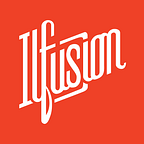5 Influencer Marketing Tips to Boost Social Media Engagement
Influencer marketing is one of the most cost-effective ways to reach audiences on social media, especially when your brand caters to a younger crowd.
Social media influencers are “celebrities” in their own right who have their own dedicated following and are considered as experts in their niche.
Tapping into the resources of influencers helps your brand to connect with new audience segments, boost your engagement, and expand your reach in a more authentic way, especially during these times when internet users are more reliant on social media than ever.
How do you make influencer marketing work for your brand? Here are 5 tips:
1. Establish your goal and strategy
Some of the most common goals of influencer marketing are:
- to expand your reach to a new user group
- to elevate brand awareness
- to increase sales
Whatever your goals are, it’s important that you establish them at the very start and build your strategy around them. Some strategies you can use are the following:
- Sponsored content: compensating influencers to create content that’s tied to your brand (e.g., a blog post, video, a social media post).
- Affiliate partnership: providing affiliate codes to influencers so that they earn money whenever someone buys your products/services through them.
- Discount promos: allowing influencers to provide discount codes for your products/services to their following (can be tied with affiliate partnership).
- Gifting: giving gifts in the form of products to influencers in exchange for a post or an honest review.
- Brand ambassadorship: partnering with an influencer for a longer period to regularly promote your brand in exchange for exclusive perks (e.g., one-year supply of your products, discount vouchers, etc.)
2. Set a clear message
Your message is also as crucial as your goal. Set clear guidelines on what message you want influencers to broadcast about your brand so as not to confuse audiences.
While it’s essential to allow influencers their creative freedom (which we will discuss in the next section), it’s also important that the way they cascade your message to their following also coincides with your brand.
3. Allow creative freedom
On a related point to Tip #2, it’s important to maintain a good balance between setting clear guidelines and allowing influencers their creative freedom. There is a good reason that influencers resonate well with their audience, and it’s because of their authenticity and uniqueness.
4. Find the right influencers for your brand
Before seeking out your influencers, always consider your brand first. What niche do you belong in? What is your tone of voice, your personality, your core values, your brand persona — among many other things. These are key questions to ask in finding the right influencer that fits your brand.
The next step is determining what to look for in an influencer. Here are a few things to consider:
- Niche: It goes without saying that your chosen influencer/s should be in the same niche/industry as your brand.
- Follower count: More followers doesn’t necessarily mean better, especially when the engagement quality is poor (that is, a high number of followers but low engagement rate). Sometimes it’s also good to seek influencers with a small but active following.
- Past posts: Look closely at the influencer’s past posts: Did they post anything controversial? Are their tone and overall persona a good reflection of your brand?
Additionally, here are tips on how and where to find social media influencers:
- Industry-related hashtags: Simply search for people on social media using the same hashtags you’re targeting. Typically, you’d look for those whose posts are on Top Trending. Another option is to use Hashtagify.me, which provides you with a list of top influencers for a specific hashtag.
- Tools: BuzzSumo’s Influencer Marketing tool is another good tool to use for finding influencers. You enter a topic and the tool then gives you a list of bloggers, influencers, journalists, companies, and even regular people who shared content related to that topic. Other tools you can use are Keyhole, Followerwonk, Cision, Influencity, and TapInfluence.
5. Track your metrics
Lastly, the one thing that’s often overlooked by marketers is regularly tracking their campaign’s metrics and results. This is important because you’ll know ahead of time whether a certain campaign is working or not, and you can make the necessary refinements for your future influencer marketing campaigns.
Google Analytics is a tool you can use to track where your website traffic is coming from. Additionally, it’s important to set trackable links to help you gauge your metrics. Google Campaign URL Builder is a good tool to use.
Other metrics you can track depending on your goal are, to name a few:
- Social media metrics: You can use your respective platform’s built-in analytics tool to measure and track engagement, follower growth, brand mentions, etc.
- Subscriber growth: You can use your email marketing platform’s analytics tool to measure this.
- Sales: Vouchery.io and Voucherify are good tools to use to track sales generated via promo codes.
Influencer marketing is growing at a fast pace, and it’s important to stay updated with the latest trends to remain relevant. If you want to learn more about digital marketing, follow our page or visit https://www.ilfusion.com/blog.
